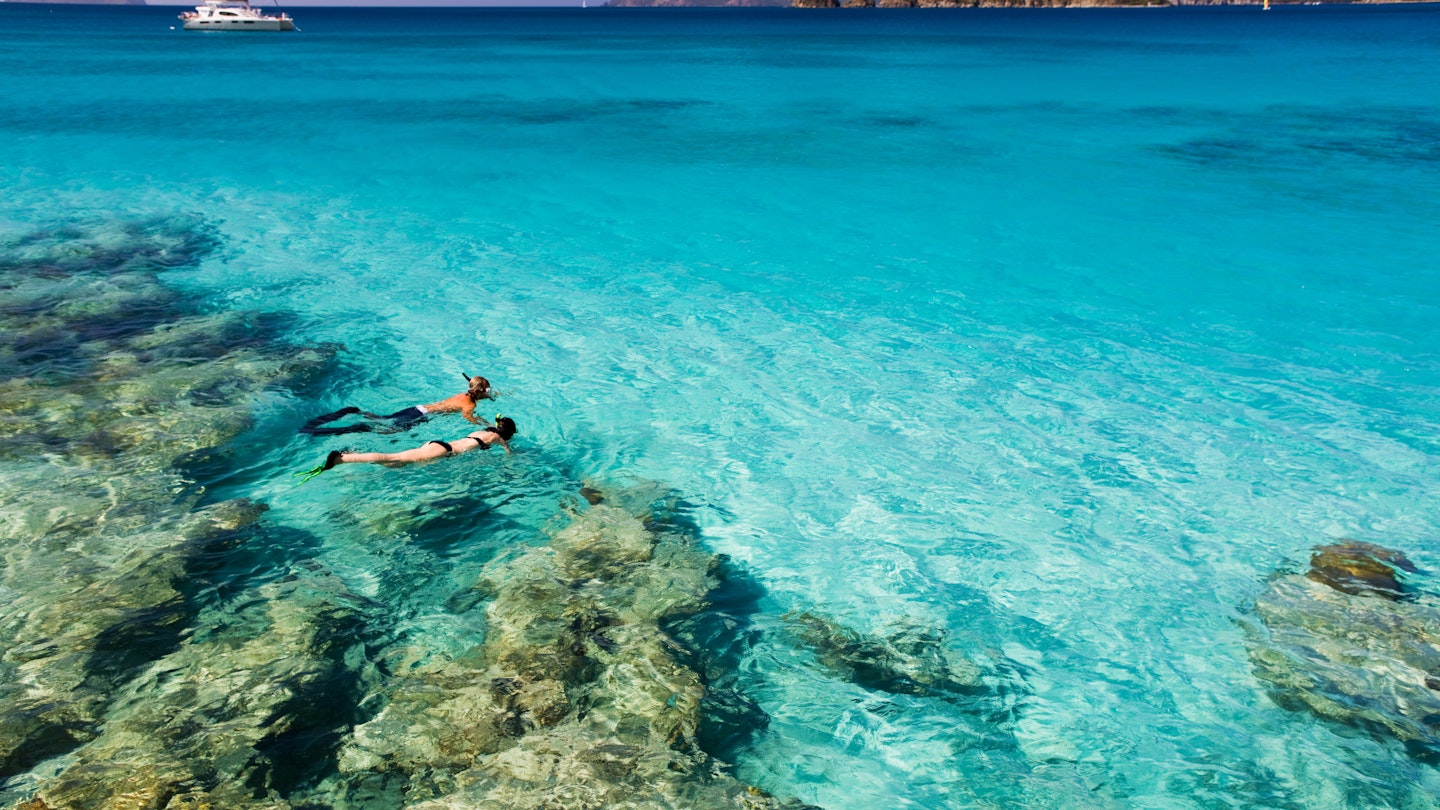Discover the Best Snorkeling Spots in the Caribbean
Kaleidoscopic tropical fish, spectacular coral reefs, and year-round warm waters make the Caribbean one of the best places for snorkeling in the world. Many island nations have marine reserves that offer pristine snorkeling conditions, often located close enough to shore for easy access.
However, visibility in the water can vary significantly due to seasonal changes and weather impacts. With that in mind, here are eight of the best snorkel spots in the Caribbean, along with what you can expect to see while you’re there.
1. Molinere Beauséjour Marine Protected Area, Grenada
Best for underwater art
Following Hurricane Ivan’s damage in 2004, the Ministry of Fisheries in Grenada commissioned British sculptor Jason deCaires Taylor to create the world’s first underwater art gallery at Molinere Bay. The artworks, made from pH-neutral cement and steel, serve as coral nurseries and have successfully attracted marine life such as parrotfish and flounder.
Planning tip: Access is only by boat, and water depths range from five to eight meters. For the best experience, consider joining a guided dive for a closer look at the sculptures.

2. Hol Chan Marine Reserve, Belize
Best for spotting sharks
Situated on the border with Mexico, Belize’s Hol Chan Marine Reserve spans over 41,700 hectares, encompassing diverse habitats, from dense mangroves and seagrass meadows to coral reefs. The Coral Garden is a key highlight, with vibrant marine life swimming among the coral structures.
Planning tip: Some guides may feed sharks to attract them, so confirm your preferences with the operator beforehand.
3. Anse Chastanet Beach, St Lucia
Best for snorkeling off the beach
Offering stunning views of the Piton mountains, Anse Chastanet is a prime location for snorkelers of all skill levels. The main reef, part of a protected marine reserve, is easily accessible and teems with colorful marine species including trumpetfish and angelfish.
Planning tip: The beach offers free parking, although boat access is also popular among visitors.

4. Doctor’s Cave Beach, Jamaica
Best for families
The tranquil waters off Doctor’s Cave Beach provide a safe and enjoyable snorkeling experience, especially for families and beginners. The underwater reefs are part of Montego Bay Marine Park, ensuring they remain protected.
Planning tip: There is a $6 entrance fee, which includes access to facilities and rentals. Food and drinks are also available from nearby restaurants.
5. Mullet Bay, Sint Maarten
Best for spotting puffer fish
Mullet Bay is celebrated for its stunning aquamarine waters and fine sandy beaches. While the snorkeling experience may be less diverse than other locations, it’s a fantastic spot to find puffer fish, particularly in the shallows.
Planning tip: Visit during the week for a quieter experience, as weekends tend to attract more locals.

6. Starfish Point, Grand Cayman
Best for seeing starfish
Located near Rum Point, Starfish Point is renowned for its red cushion starfish, making it a unique snorkeling opportunity. Typically, starfish can be found in ankle-deep, clear waters, making it accessible for all ages.
Planning tip: For a quieter experience, visit in the morning before tour groups arrive.
7. Smith’s Reef, Turks and Caicos
Best for corals
Smith’s Reef is known for its remarkable coral diversity, featuring vibrant fan coral and colorful sponges. The waters are home to an array of marine life, including sea turtles and eagle rays.
Planning tip: It’s accessible from the beach, but consider a boat trip to save time and energy.
8. Carlisle Bay Marine Park, Barbados
Best for shipwrecks and turtles
Carlisle Bay Marine Park is famous for its seven purposely sunk shipwrecks, which create unique habitats for marine wildlife. The shallow wrecks are easily accessible, and snorkelers often see schools of tropical fish and turtles in the vicinity.
Planning tip: Though guided tours are available, swimming out from the beach offers an intimate experience with the wrecks.





